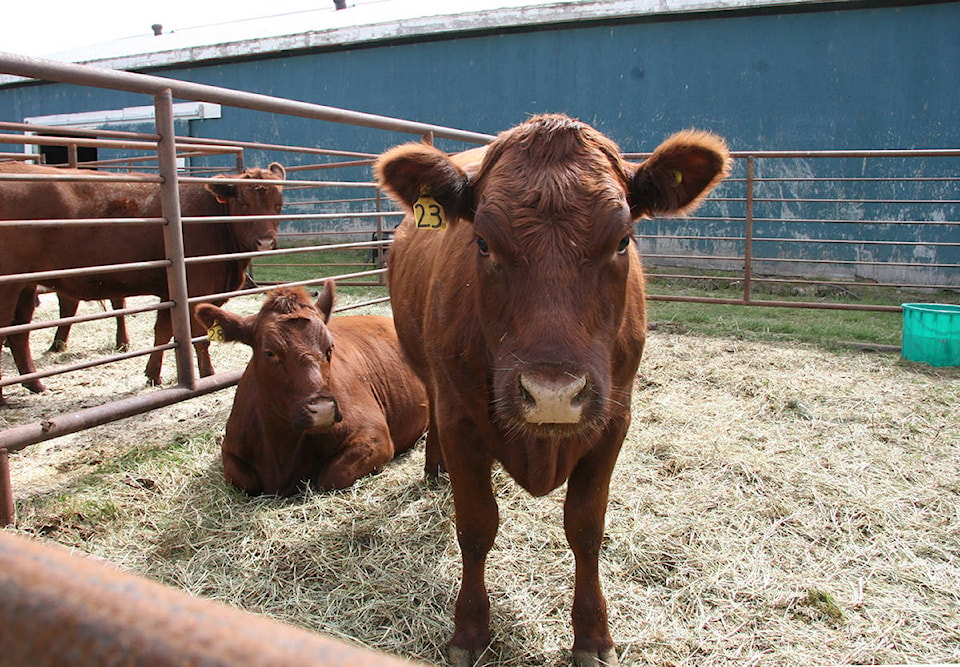A mixed bag of issues will leave the swine and cattle industries wondering if they will prosper or simply break even in 2019.
The chief agricultural economist for Farm Credit Canada — J.P.Gervais — in the organization’s annual outlook on the red meat industry pointed out profits are still there for the taking, though it’s going to be tougher to do in 2019.
He explained Canada’s hog sector will be challenged with higher feed prices and a North American excess supply. Plus, on the cattle side the continued inability to increase herds and production along with more U.S. cattle coming to Canadian feedlots will leave profit margins at around average.
RELATED: Canadian profits limited due to berry oversupply denotes FCC
“The demand is there both domestically and in the export markets, that’s the good news. The red flag will be the rising supply south of the border,” said Gervais.
Partial pork profit
A combination of possible higher interest rates, a limit on domestic growth, higher feed expenses and the likelihood of too much supply stretching the market will curb what revenue producers can expect in the hog sector.
“Variable profits is something that came to light in the second half of last year, as the U.S./Mexico trade dispute plus a nearly three per cent jump in U.S. production hit Canadian producers,” Gervais noted.
“However, with domestic production slated to stay the same at 2018, the supply in North American will grow and cause a dip in prices.”
RELATED: Guarded but encouraging outlook for Canadian crops in 2019
The expectation is U.S. production with rise around five per cent this year, with a forecast average price for lean hogs dropping seven per cent from last year to between $41 and $44 USD per hundred pounds (cwt). That’s a drop from the early projections of $62 per cwt for 2019.
One positive though is that a weaker loonie will help support producer’s profit margins, while more access to other export markets through the Trans-Pacific Partnership is also a positive.
Cattle cash
Gervais added that Canada’s cattle industry will also see its profit potential rise or fall depending on which portion of the business sector a producer dabbles in.
RELATED: Canada’s food processing growth trend anticipated to continue in 2019
For cow-calf producers: “While the sector as a whole will stay profitable, margins this year for cow-calf producers will fall below the three-year average,” he stated.
For feedlots: “And though feedlots will experience some pressure, on average, their margins should stay on the positive side of the ledger.”
Cattle production isn’t anticipated to grow in 2019, leaving prices to average about $145 CAD per cwt — all of this in spite of U.S. production slated to jump three per cent. One factor challenging growth and pricing is the dry Prairie conditions last year, which led to fewer heifers held onto by farmers and smaller weights being sold to feedlots.
Another factor in keeping prices similar to 2018 is not enough cattle to meet Canadian packer demand, which is at its highest in the last 15 years. And that demand is up both domestically and globally, with both U.S. and Canadian exports breaking records last year.
Challenges ahead
That being said, Gervais added there are more than a few red flags waving in the field for both sectors.
As is the case for all of agriculture in 2019, evaluating operations and ensuring efficiency is key.
“With costs going up — for everything from feed to inputs to energy — profitability is tight and operations have to be careful to monitor their risks. That’s all going to put some pressure on producers,” he said.
Staying with expenses, the price of western Canadian feed is slated to rise. Although, any increase should be muted by a greater supply due to last year’s late harvest even with the availability to barley stocks being tight. Out east, there is a potential mycotoxin infection in the Ontario corn crop that could lead to more importing, which may create more pressure on profits.
READ MORE: Loonie, trade will have affect on Canadian agribusiness
Trade and supply are two other areas that could test both hog and cattle this year.
“A big red flag for Canadian producers is the rising supply, especially south of the border,” Gervais stated.
“In the North American market, we are price takers as the U.S. market is much larger. As the supply of animals moves up, it puts more pressure on Canadian prices.”
READ MORE: Low strength of loonie to help poultry producers
He noted that U.S. hog exports are expected to rise eight per cent in 2019, driven by global demand and lower prices at home, on top of six per cent growth last year.
However, that jump along with growth in U.S. cattle production may not affect Canadian producers as much due to recent trade agreements and the current China-U.S. tensions.
READ MORE: Canada’s dairy sector expected to remain profitable as import market starts to expand
“All of this growing production in North America means there is still a need for the export market to absorb some of that supply,” Gervais explained.
“With the trade deals Canada has developed, that’s all good. But with the rising supply environment of animal proteins, we need all of these open borders and to generate access to greater market to be optimistic for the future.”
This is the last of seven articles in a series looking at the agricultural sector for Canadian producers.
